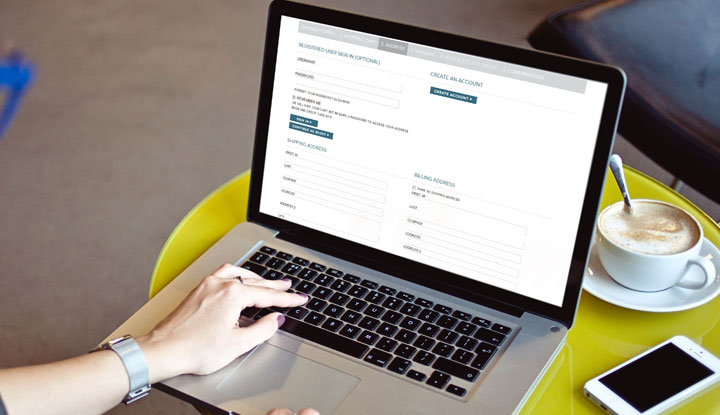The multi-channel world is here, whether or not your business is ready for it. It’s time to gain a better understanding of your marketing funnel, and that’s not just about understanding device usage and digital touch points, but understanding how phone calls or visits to a bricks-and-mortar store play a part in the customer journey.
Customers are increasingly zig-zagging across devices to complete processes, often using three different screens a day. As Forbes reports, the widespread adoption of smartphones means that every customer is a multi-channel customer.
[hr]
If you take a look at the world’s 7 billion plus people, more of these people own smartphones than toothbrushes. How’s that for mind boggling? – Convince & Convert
[hr]
In this new landscape, businesses that fail to implement a multi-channel strategies are going to lose out to those that do, as they will be effectively creating barriers to customer conversions.
So, what do savvy entrepreneurs need to put in place to maximize multi-channel conversions? Here’s a look at four key areas you should shore up in coming months.
Is your online payment process form-heavy?
Thirty-two percent (32%) of British people make monthly purchases on their smartphones, more than in any other European country. While, a US-based mobile path-to-purchase study suggests “42 percent of users relied exclusively on mobile devices in their pre-purchase research,” and “more than half (55 percent) of mobile retail shoppers ultimately make a purchase.” (Source: MarketingLand)
[hr]
Mobile devices will account for 30 percent of global retail e-commerce spending by 2018, up from 15 percent in 2013, according to CMO.com.
[hr]
Mobile devices will account for 30 percent of global retail e-commerce spending by 2018, up from 15 percent in 2013, according to CMO.com. Meanwhile, abandonment rates for mobile shoppers on ecommerce sites is at 82 percent, much higher than those for tablet or desktop users. Sometimes this is because customers prefer to switch to a bigger screen for purchasing, due to either security or usability concerns.
If you rely on customers to make this switch you can risks alienating heavy mobile users or customers that become distracted during the changeover, failing to complete their purchase. If your website payment process requires returning visitors to fill out several long forms that are difficult to use on a smartphone screen, be prepared for high cart abandonment.
Responsive design isn’t solely about resizing pages for smaller screens. A key driver of cart abandonment is useability. Think about how easy it is for customers to input data: would a numbered keypad be a better choice for typing in card details? Can repeat customers save their address and billing information? Is it easy to update quantities at checkout, by using a drop-down menu instead of typing manually?
Is your website mobile call friendly?
Having a mobile-friendly website isn’t just about responsive design. With many people shifting away from landlines to mobiles, particularly in younger age groups, you need to consider if you’re inadvertently placing obstacles in the way of potential customers calling you.
If you’re selling nationwide, or globally, and don’t want to be tied to a geographic number, toll-free and virtual phone numbers are popular options to make it easy for customers to contact you. However, toll-free numbers aren’t always free to call from a mobile or included in calling plans.
There are ways that businesses can get around this. In the UK, new 03 numbers are cheaper for mobile customers and covered by talk plans. In the US, responsive websites could include a geographic number for users whose calling plans cover these, while some businesses are offering toll-free text messaging. This helps to avoid any second thoughts before a potential customer hits call on their mobile to buy, book or ask a pre-sales question.
This also applies to post-sales contact as well as initial inquiries. Making customers call a phone number that could cost them or exceed their mobile rate plan for after sales support could easily prevent them from repeat purchases.
Is your shopping cart smart?
We have become a nation of multi-screen users. Dai Pham, at Google Mobile Ads Marketing confirms that “90% of people move between devices to accomplish a goal, whether that’s on smartphones, PCs, tablets or TV.” If your shopping cart system forces them to re-choose purchases when they’re on a different device, you risk hiking up your abandonment rates and pushing conversions down.
A persistent cart uses long-lasting, multi-channel cookies to store basket history for days and makes them accessible from multiple devices. It makes it as easy as possible for customers to buy and can serve as a reminder if they were forced to take a break from browsing by outside distractions. This doesn’t compromise security information, as ecommerce systems still require a log-on to pay, and customers can easily choose to opt-out if they’d rather not have their cart tracked.
Is your website personalized?
If you have a physical shop or office, you wouldn’t greet every single customer the same way. So, why do the same on your company website? On ecommerce sites this might mean suggesting products based on browsing and purchase history and favorite content, with targeted special offers. On a B2B site, where conversions tend to happen on the phone or face-to-face, it might mean serving targeted content based on offsite browsing history.
[hr]
“When personalization is done right, the consumer may not even notice, but the benefit is a more relevant experience that cuts through the clutter. The benefit to the retailer or website is increased revenue or engagement. It’s really a win-win for everyone.” – Digital Trends
[hr]
When it works the results are impressive: For example, jeweler Astley Clarke saw a 60% uplift in conversions after integrating personalization into their website. (Source: The Guardian) Digitaltrends reports, “A new study conducted by Accenture found that the majority of consumers in both the U.S. and UK are willing to have trusted retailers use some of their personal data in order to present personalized and targeted products, services, recommendations and offers.” But it’s not without drawbacks.
Personalization remains something most consumers want, though their privacy fears continue to escalate, ClickZ confirms. Giving inaccurate suggestions can be worse than nothing, so entrepreneurs on smaller budgets may be better off focusing on just delivering one or two aspects of personalization.
For startups and small businesses implementing these multi-channel strategies offers a chance to get processes right from the beginning, building a firm foundation for success.
This article has been edited and condensed.
Sarah Willis is a business writer and editor, covering a range of topics including business, finance and start-ups. Connect with @SarahQWillison Twitter.
© YFS Magazine. All Rights Reserved. Copying prohibited. All material is protected by U.S. and international copyright laws. Unauthorized reproduction or distribution of this material is prohibited. Sharing of this material under Attribution-NonCommercial-NoDerivatives 4.0 International terms, listed here, is permitted.













